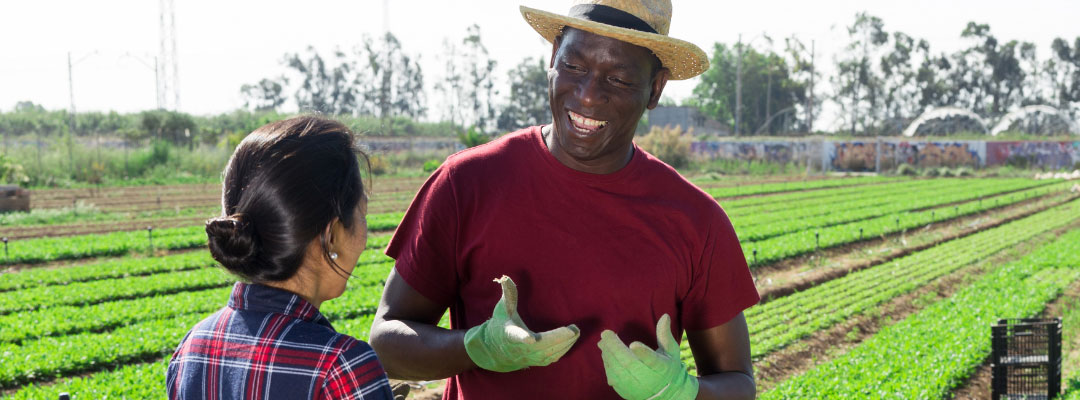A cooperative is owned and controlled by its members. It can therefore negotiate on behalf of its members to increase competitive advantage by achieving efficient operational scale, negotiating better product and input prices, reducing production risk, obtaining better insurance, engaging the next generation, and handling the administrative red tape burden for its members.
Marketing
One of the most common uses of a cooperative is to aggregate farm products and collectively market these products on an efficient scale. Many markets, such as wholesale and institutional markets, are not accessible to smaller, individual growers. Value-added processing is another layer of risk management that newer, next-generation cooperatives employ to access markets and increase economic value to their members. PYCO Industries is a good example: a cottonseed oil mill with over 50 cotton gin members.
Ownership and voting details aside, other business structures, such as LLCs and S Corporations, may address many of these marketing items. However, the Capper-Volstead Act protects cooperatives from some provisions of antitrust legislation [entire history and explanation and a shorter blog version]. One purpose of this exemption is to give farmers more bargaining power with large processors and distributors, to whom the farmers are at a competitive disadvantage. Another purpose is to allow farmers to unite to survive economic downturns.
Production Risk Management
Cooperatives can manage production risk by joining farmers in various growing regions to help them survive widespread production losses. Shoreline Fruit Cooperative is a good example. This cherry grower cooperative mitigates the risks of total cherry crop loss by sourcing from multiple growers in separate microclimates in the Great Lakes region.
Bargaining for lower input costs is another production risk management technique many supply (or buying) cooperatives use. The Southern Loggers Cooperative is a successful cooperative that helps its members get the best prices on fuel, truck parts, and other supplies. The Producers Cooperative Association, the United Ag Cooperative, and the Southern States Cooperative are good examples of southern agricultural supply cooperatives.
Casualty and Liability Insurance
Mutual insurance companies are good examples of consumer-owned cooperatives. The first cooperative in the US was a mutual fire insurance company, the Philadelphia Contributionship, founded in 1752 by Ben Franklin.
Cooperatives are also helpful in obtaining better rates on liability insurance, and prescribed fire cooperatives are good examples. The Aiken Prescribed Fire Cooperative in South Carolina is working with other prescribed fire cooperatives to find better options for liability insurance products for using prescribed fire to manage privately held forest lands.
For cooperatives looking for insurance, it should be mentioned that Triangle Insurance, located in Oklahoma, is a cooperative that specializes in insuring other cooperatives.
Engaging the Next Generation
Engaging the next generation and retaining a dedicated workforce is challenging for many farm businesses. A cooperative can be an excellent tool for addressing this challenge by bringing in the next generation as cooperative owners. Shifting one’s role from “employee” to “owner” is a powerful motivation, and allows a cooperative the potential to offer a higher annual income (versus wages). A good example is the Cape Romain Oyster Cooperative, which formed solely to bring along the next generation of employees-as-owners. For cooperatives with high equity/capitalization requirements, the cooperative may elect to have new owners buy in, over time, to meet these equity requirements. This buy-in, over time, may also provide a reasonable trial period for prospective new owners.
Reducing Administrative Burdens
Ever hear the quote “if it is not documented, it didn’t happen?” Farming today involves more documentation, paperwork, and general red tape than ever. It may be worth starting a cooperative purely to share this administrative burden and reduce legal risks. Citrus grower cooperatives, such as Florida’s Natural, are good examples. These cooperatives handle paperwork items such as Good Agricultural Practices (GAP and Harmonized GAP), pesticide application records, and traceability for their members.
Enhance Your Competitive Advantage!
The fundamental difference between a cooperative and other business structures is that the farmer-owners of a cooperative have collective “skin in the game”. If you are part of a cooperative, strive to be engaged with that cooperative by attending meetings, voting in elections, becoming a board member, and encouraging the next generation to do the same.
If you are looking to start a cooperative, many land-grant universities have extension personnel and cooperative specialists who help cooperatives succeed by training and developing cooperative board members and staff. Also, CooperationWorks! is a cooperative that supports land-grant and non-land-grant cooperative development centers. A map of development centers can be found on their website, along with many good supporting materials.
Richards, Steve. “Using Cooperatives to Enhance Competitive Advantage.” Southern Ag Today 5(29.5). July 18, 2025. Permalink

